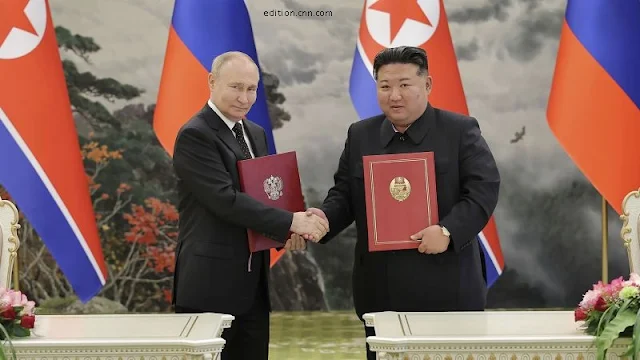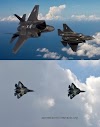In a development that has alarmed Western defense analysts, North Korea has issued wartime-level directives to its armed forces, reportedly telling units to prepare for a “real war.” The message comes against the backdrop of Russia’s deepening manpower crisis in Ukraine—a scenario that could potentially reshape global military alliances. North Korea’s message isn’t an idle threat. It’s a strategic signal, meant for both domestic morale and international observers, that Kim Jong-un may be positioning his country to support Moscow militarily or leverage the war in Ukraine to further destabilize the global order.
North Korea’s “Real War” Messaging: What’s New in 2025
Drills on a Massive Scale
In early July 2025, satellite imagery confirmed massive troop mobilizations in North Korea’s eastern provinces, including the Wonsan and Hamhung regions. Tanks, missile launchers, and artillery units were observed moving toward forward positions. Pyongyang also resumed live-fire drills near the DMZ, raising alarms in Seoul and Tokyo. This shift is part of what Kim Jong-un reportedly called a “war-ready defense posture,” a doctrine aimed at preparing for multiple scenarios—from defensive operations against perceived U.S. provocations to support missions alongside key allies like Russia.
Military Rhetoric Escalates
Official state media have used increasingly aggressive language. Terms such as “total resistance,” “imperial aggression,” and “global unity of anti-Western powers” have become central to Pyongyang’s narrative. Analysts interpret this not only as internal propaganda but as psychological warfare, aimed at conveying alignment with Russia's anti-NATO worldview.
Russia’s Dwindling War Machine and the Pyongyang Pivot
Russian Casualty and Manpower Shortages
Russia’s prolonged war in Ukraine has taken a toll. With estimates suggesting hundreds of thousands of casualties, the Kremlin faces severe manpower shortages. Recruitment efforts, including prisoner mobilization and increased conscription, have failed to meet frontline needs. North Korea, with its massive standing army of over 1.2 million troops, presents a tempting informal ally. While no official troop deployment has occurred, there is growing concern that North Korean “volunteers” or paramilitary units could eventually appear in support roles, especially in occupied Ukrainian regions.
Arms and Ammunition Transfers
There is already evidence of weapons shipments from North Korea to Russia. U.S. and South Korean intelligence have cited trainloads of artillery shells, rockets, and small arms moving through the Russian Far East, allegedly bound for Donbas forces. The shipments are part of what some call the “rogue weapons corridor” involving Russia, North Korea, and Iran. Such shipments prolong Russia’s ability to continue its war despite Western sanctions, while offering Pyongyang a chance to test weapons systems in real combat scenarios—a strategic win-win.
Global Reactions: From Tokyo to Washington
South Korea and Japan on High Alert
In response to North Korea’s military posture, both South Korea and Japan have raised their defense alert levels. The U.S. has deployed additional surveillance aircraft, including Global Hawk drones, to monitor North Korean troop movements. “The possibility of coordinated military pressure from Russia and North Korea is no longer theoretical,” said one Japanese defense official.
U.S. Military’s Strategic Calculus Changes
The Pentagon has begun reassessing its Indo-Pacific force allocations, balancing between deterrence in Europe and containment in Asia. The prospect of a Russia-North Korea axis acting in concert has triggered joint exercises between the U.S., South Korea, and Japan, emphasizing missile defense, cyber coordination, and multi-domain warfare.
Strategic Benefits for Kim Jong-un
Political Leverage and International Relevance
For Kim Jong-un, aligning with Russia enhances his geopolitical leverage. After years of international isolation, Pyongyang is re-emerging as a critical player in a new global bloc that includes China, Iran, and Russia. This strategic alignment allows Kim to:
Gain political legitimacy from Moscow
Secure energy, food, and currency aid
Demonstrate military utility to allies and adversaries
Export ideological solidarity as a tool of regime preservation
Military Technology Exchange
North Korea also seeks access to Russian military tech, especially satellite reconnaissance, advanced drones, and nuclear submarine designs. In return, Pyongyang can offer Russia low-cost munitions and manpower, creating a mutually beneficial shadow alliance.
What a Russia-North Korea Military Pact Could Look Like
1. Covert Deployment of Military Advisers
North Korea may initially send advisers or technicians to assist Russian logistics and artillery units in occupied Ukrainian areas—allowing plausible deniability while supporting Moscow’s war effort.
2. Joint Military Exercises
Reports from Russian media hint at the possibility of joint Russia–North Korea drills in the Sea of Japan or near the Korean Peninsula—something that would deeply rattle U.S. Indo-Pacific strategy.
3. Strategic Distraction Tactics
By escalating tensions on the Korean Peninsula, North Korea could force the U.S. to split its military resources, weakening Western unity in both Europe and Asia.
Potential Global Fallout
China’s Calculated Silence
While Beijing has remained publicly neutral, analysts believe China is quietly observing this alliance. A Russia–North Korea alignment gives Beijing cover to expand its influence in Taiwan and the South China Sea while avoiding direct confrontation.
NATO’s Eastern Border Strategy Adjusts
NATO is considering placing permanent rapid-reaction forces in Poland, Lithuania, and Romania to deal with any two-front escalation scenario. The potential for a multi-regional conflict involving Russia, North Korea, and possibly Iran is driving a new urgency in NATO's planning.
Analysts’ Warnings and Historical Echoes
A Return to Cold War Bloc Politics
What’s emerging, many experts argue, is a return to ideological bloc warfare, with democratic nations pitted against authoritarian powers. This time, however, the battlefield is not just in Berlin or Pyongyang—but also in cyberspace, energy corridors, and disinformation networks.
Nuclear Posturing Risks
Both North Korea and Russia have recently referenced the use of nuclear weapons in strategic doctrines. Though intended as deterrents, the ambiguity surrounding their thresholds for use is deeply troubling for global security.
In conclusion, North Korea’s military escalation and potential cooperation with Russia should not be underestimated. It signals a possible two-front destabilization campaign aimed at weakening the West while empowering authoritarian regimes. As Kim Jong-un calls on his troops to prepare for “real war,” the world must ask: Are we entering a new age of multi-regional military conflict—one that could spiral beyond control? Preparedness, diplomacy, and global unity are now more vital than ever.






0 Comments